- Joined
- Sep 28, 2018
- Messages
- 243
- Points
- 348

Buongiorno, inizio un nuovo progetto, il Saint Philippe. Sicuramente non è un modello per i meno esperti, viste le difficoltà soprattutto per la costruzione delle varie parti delle coste che richiedono la realizzazione di mortase per incastrarsi una all'altra (tutte da disegnare anche perché non sono riportate nell'accostolato). Infatti la carpenteria del Saint Philippe ha questa particolarità, i vari pezzi che compongono le coste sono incastrati l'uno sull'altro ed intagliati appunto con delle mortase. Penso che per affrontare un lavoro del genere sia indispensabile una buona conoscenza della costruzione navale di questo periodo che è diversa da quella descritta da Jean Boudriot nei quattro volumi del 74 Cannoni. Mi rendo conto, per esperienza personale, che i disegni del signor Lemineur non sono sempre di facile interpretazione, ma le sue navi di quel periodo storico mi affascinano non poco. E poi, avendo già costruito due sue navi, la Volage e la Nereide, credo di avere acquisito una certa familiarità con i suoi disegni.
Altro particolare, studiando i piani si deduce anche che le coste non si innalzano perpendicolarmente alla chiglia ma sono inclinate in avanti.
Come potete notare dalle immagini, cercherò di simulare la colorazione con le varie essenze di legno.
Le due mezze coste verranno eseguite una in legno di pero e l'altra mezza costa in ciliegio per evidenziarne le mortase. Userò l'ebano per le parti colorate di nero ed i reheart per quelle in rosso. Tutte le sculture saranno in bosso. Devo ancora decidere se usare l'acero per il tavolato dei ponti o un'altra essenza.
Infine, sul lato dritto, ad eccezione delle coste in corrispondenza delle porche che rimarranno intere, tutte le altre saranno aperte all'altezza del ginocchio (per questa parte che poi verrà tolta, ho usato il legno di teak).
Good morning, I'm starting a new project, the Saint Philippe. It is certainly not a model for the less experienced, given the difficulties especially in the construction of the various parts of the ribs which require the creation of mortises to fit together (all of which must be drawn also because they are not shown in the side panel). In fact the carpentry of the Saint Philippe has this particularity, the various pieces that make up the ribs are fitted onto each other and carved with mortises. I think that to tackle such a job, a good knowledge of the shipbuilding of this period is essential, which is different from that described by Jean Boudriot in the four volumes of 74 Cannons. I realize, from personal experience, that Mr. Lemineur's drawings are not always easy to interpret, but his ships from that historical period fascinate me quite a bit. And then, having already built two of his ships, the Volage and the Nereide, I think I have acquired a certain familiarity with his drawings.
Another detail, by studying the plans it is also deduced that the ribs do not rise perpendicularly to the keel but are inclined forward.
As you can see from the images, I will try to simulate the coloring with the various wood essences.
The two half ribs will be made, one in pear wood and the other half rib in cherry to highlight the mortises. I will use ebony for the black colored parts and rehearts for the red ones. All sculptures will be in boxwood. I still have to decide whether to use maple for the decking or another wood.
Finally, on the straight side, with the exception of the ribs corresponding to the porches which will remain intact, all the others will be open at knee height (for this part which will then be removed, I used teak wood).
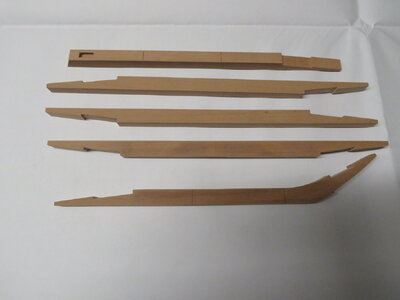
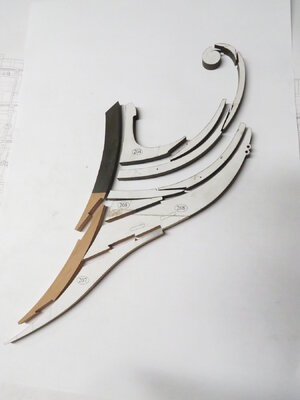
Quindi anche il Saint Philippe presenterà la carena parzialmente aperta per vedere gli interni, come ho fatto anche con le Commerce de Marsiglia e la Nereide.
So the Saint Philippe will also have the hull partially open to see the interiors, as I also did with the Commerce de Marseille and the Nereide.
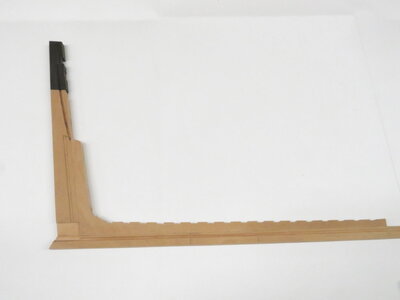
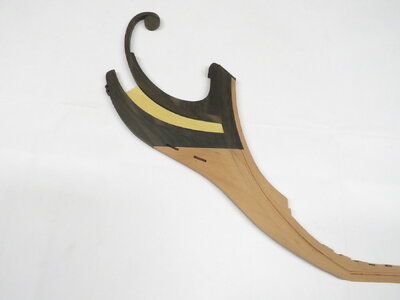
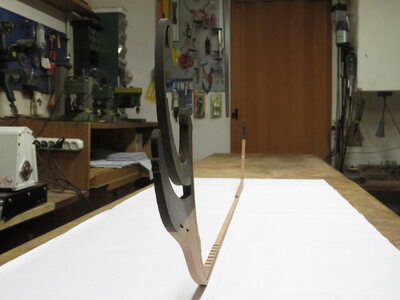
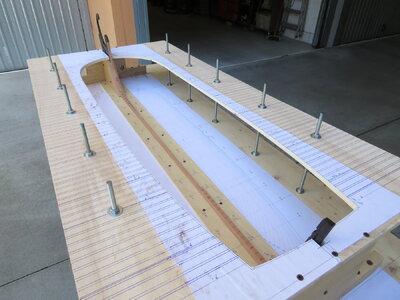
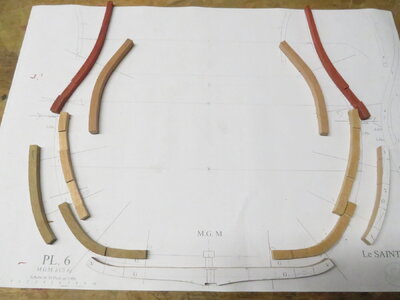
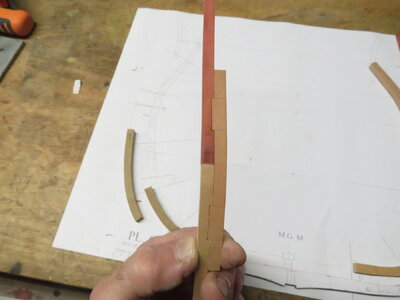
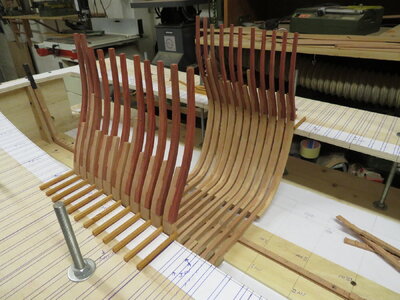
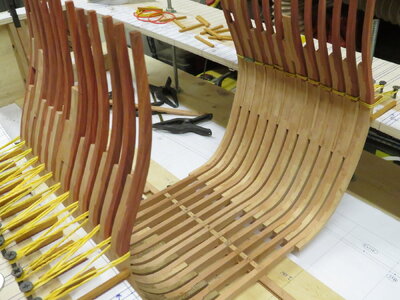
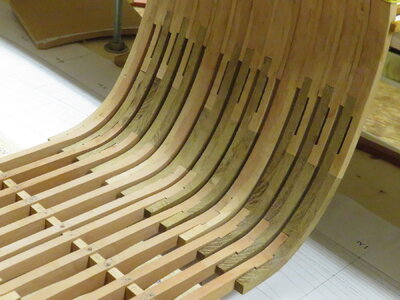
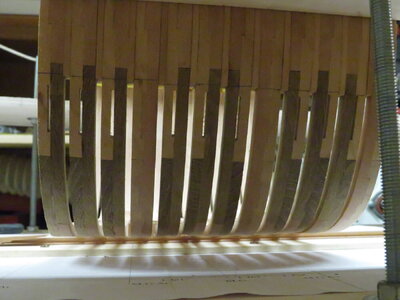
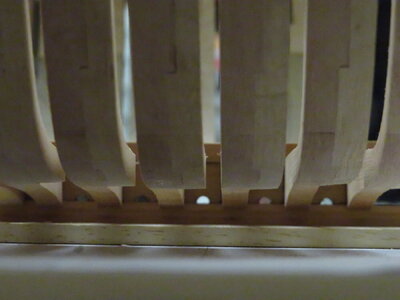
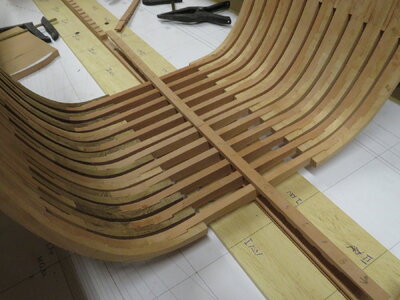
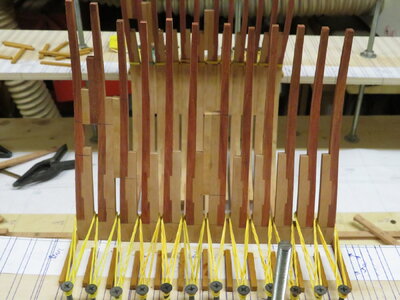
Altro particolare, studiando i piani si deduce anche che le coste non si innalzano perpendicolarmente alla chiglia ma sono inclinate in avanti.
Come potete notare dalle immagini, cercherò di simulare la colorazione con le varie essenze di legno.
Le due mezze coste verranno eseguite una in legno di pero e l'altra mezza costa in ciliegio per evidenziarne le mortase. Userò l'ebano per le parti colorate di nero ed i reheart per quelle in rosso. Tutte le sculture saranno in bosso. Devo ancora decidere se usare l'acero per il tavolato dei ponti o un'altra essenza.
Infine, sul lato dritto, ad eccezione delle coste in corrispondenza delle porche che rimarranno intere, tutte le altre saranno aperte all'altezza del ginocchio (per questa parte che poi verrà tolta, ho usato il legno di teak).
Good morning, I'm starting a new project, the Saint Philippe. It is certainly not a model for the less experienced, given the difficulties especially in the construction of the various parts of the ribs which require the creation of mortises to fit together (all of which must be drawn also because they are not shown in the side panel). In fact the carpentry of the Saint Philippe has this particularity, the various pieces that make up the ribs are fitted onto each other and carved with mortises. I think that to tackle such a job, a good knowledge of the shipbuilding of this period is essential, which is different from that described by Jean Boudriot in the four volumes of 74 Cannons. I realize, from personal experience, that Mr. Lemineur's drawings are not always easy to interpret, but his ships from that historical period fascinate me quite a bit. And then, having already built two of his ships, the Volage and the Nereide, I think I have acquired a certain familiarity with his drawings.
Another detail, by studying the plans it is also deduced that the ribs do not rise perpendicularly to the keel but are inclined forward.
As you can see from the images, I will try to simulate the coloring with the various wood essences.
The two half ribs will be made, one in pear wood and the other half rib in cherry to highlight the mortises. I will use ebony for the black colored parts and rehearts for the red ones. All sculptures will be in boxwood. I still have to decide whether to use maple for the decking or another wood.
Finally, on the straight side, with the exception of the ribs corresponding to the porches which will remain intact, all the others will be open at knee height (for this part which will then be removed, I used teak wood).


Quindi anche il Saint Philippe presenterà la carena parzialmente aperta per vedere gli interni, come ho fatto anche con le Commerce de Marsiglia e la Nereide.
So the Saint Philippe will also have the hull partially open to see the interiors, as I also did with the Commerce de Marseille and the Nereide.













Last edited by a moderator:







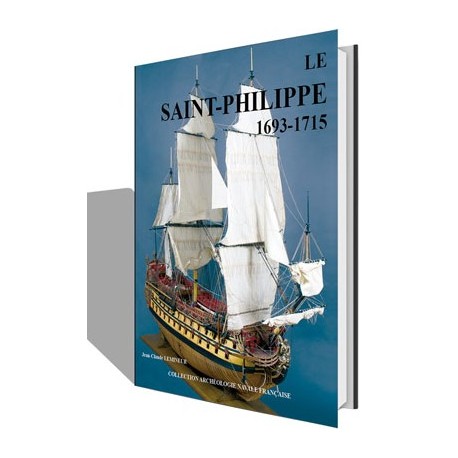


 wish you all the best and happiness
wish you all the best and happiness